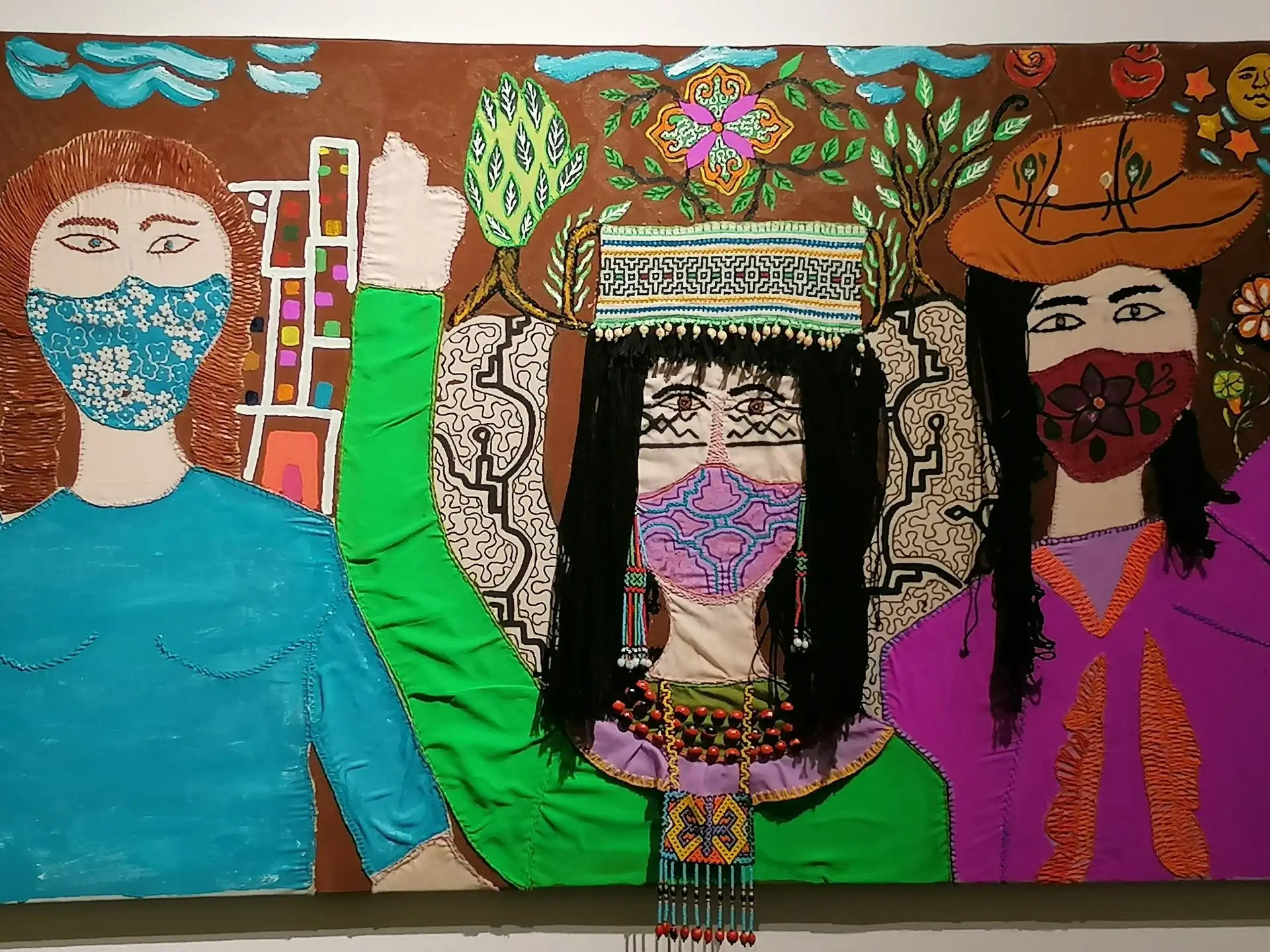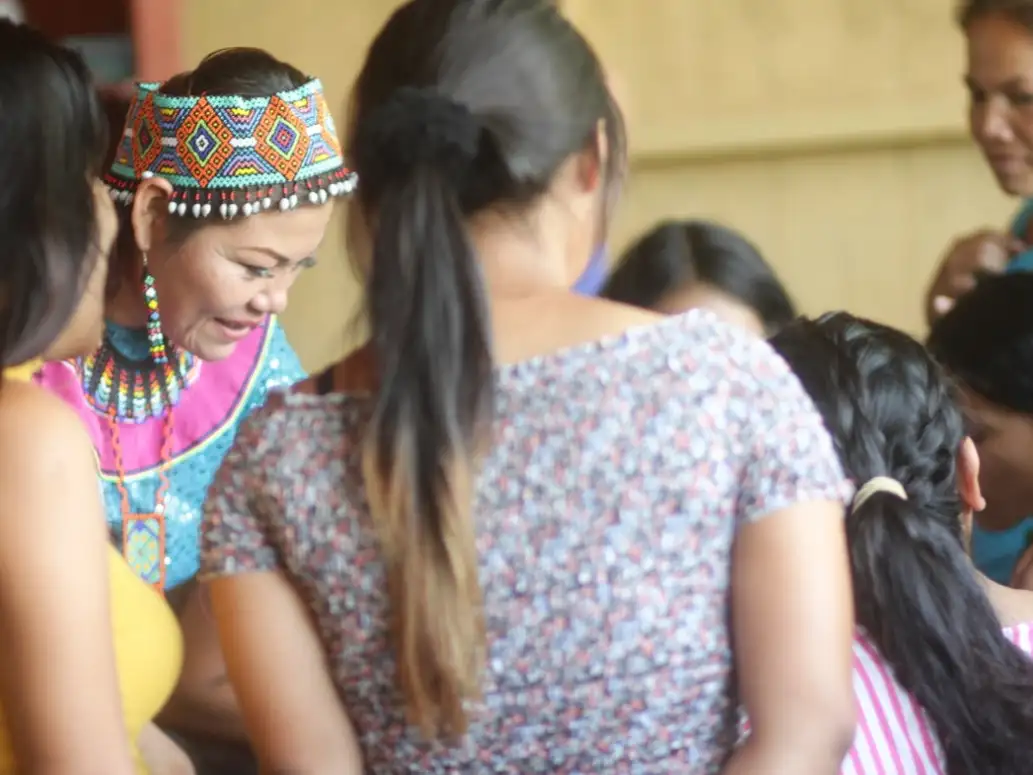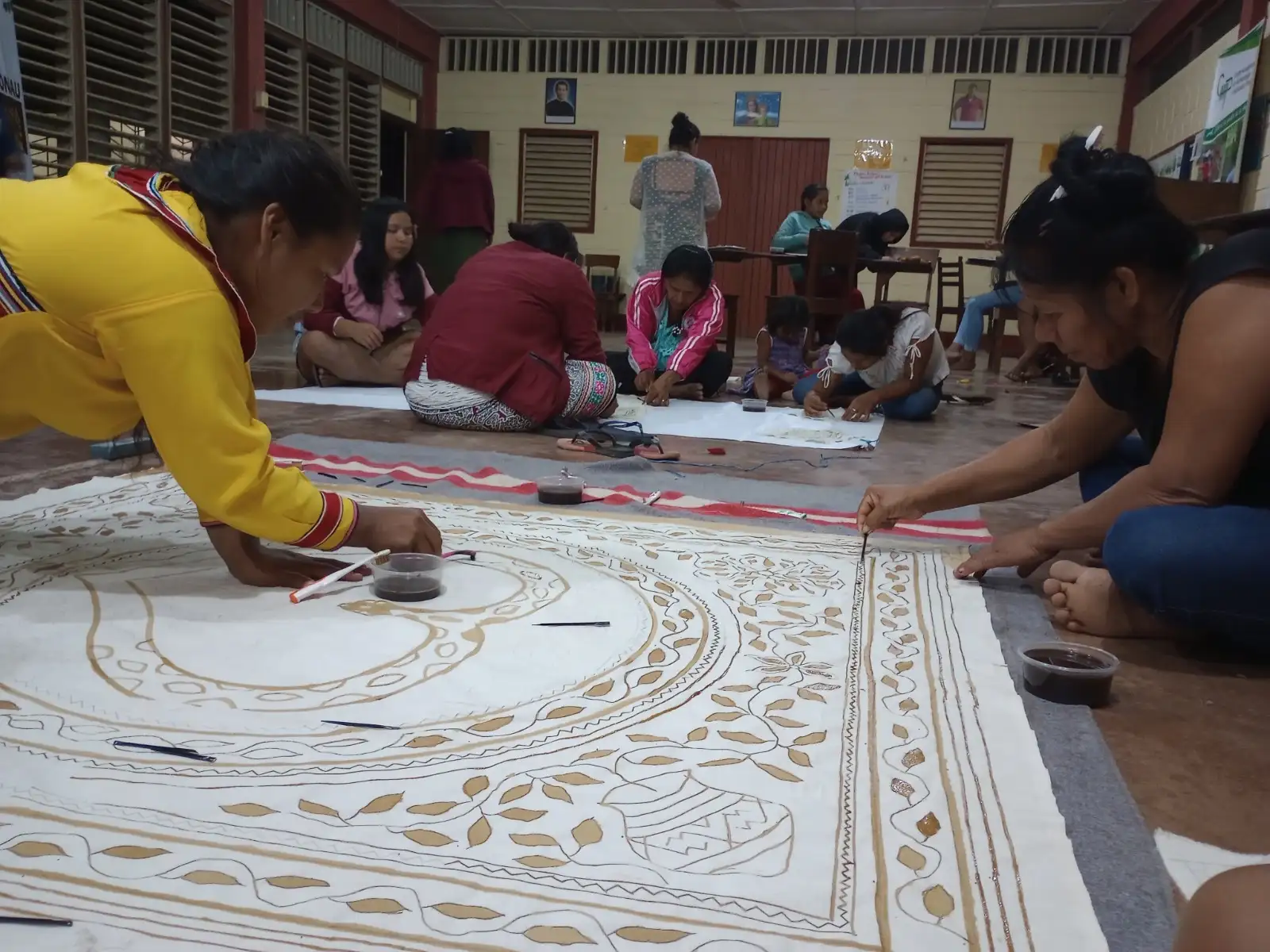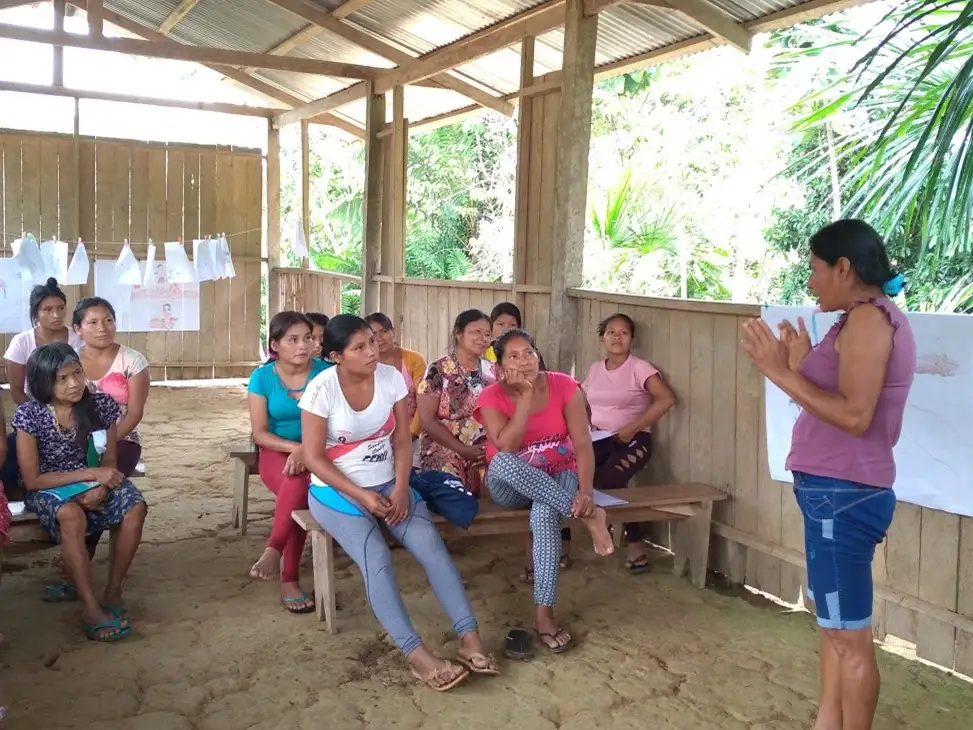

“Equality” by indigenous artist Sadith Silvano, Peru.
On 9 August we celebrate International Day of the World’s Indigenous Peoples, an important moment to raise awareness of the rights of indigenous communities around the world and celebrate their unique cultures, languages and way of life.
While indigenous communities make up less than 5% of the world’s population, they represent 15% of the world’s poorest peoples, making them among the most disadvantaged and vulnerable groups worldwide.
Globally, indigenous communities often face political, legal, economic and social discrimination and are often treated as second-class citizens. As a result of this discrimination, indigenous communities often have limited access to health services, education and employment.
In Peru, around 25% of the population identify as indigenous and it is common for their human rights to be violated. For indigenous communities living in the Amazon, their rights to land are often threatened and families are at risk of eviction from their homes. This is often due to illegal gold mining and logging which cause serious harm to the environment but that also have significant health implications. Water sources are often polluted with mercury and communities often see an increase in respiratory and skin conditions.


Comunidad nativa San Salvador -Pucallpa
Indigenous ancestral traditions in Peru and worldwide are often at risk, as these practices are undervalued and access to information is limited. Many indigenous communities in Peru such as the Awajún, Shipibo-Konibo and Harakbut peoples migrate to cities like the capital Lima for better employment opportunities often leading to a loss of their cultural identity.
Indigenous women in the Peruvian Amazon, like many women in Latin America are especially vulnerable to gender-based violence because of social norms which normalise violence towards women and control over women’s lives. Women are often seen as being “less” than men and have very few opportunities to express their opinions and take on leadership roles.
In response to all these challenges, our church partner CAAAP (the Amazonian Centre for Anthropology and Practical Application) is working alongside indigenous women in the regions of Madre de Dios, Ucayali, Amazonas and Lima to support them in standing up for their individual rights and indigenous people’s rights.
Reclaiming indigenous cultures
Women from the Amazon play a crucial role in maintaining indigenous culture and are often seen as educators, fighters, and creators in their communities. Their ancestral knowledge about the relationship between the human and spiritual world and their connection to the earth is very rich and women have historically maintained indigenous culture through their native language, songs and storytelling.


Women are learning to reclaim their ancestral traditions in Pucallpa, Peru. Photo: CAAAP
Our partner CAAAP is working with indigenous Amazonian women to help them share and revalue their ancestral practices for example their indigenous cosmovision of what it means to live well in the Peruvian Amazon, including learning on how they care for the environment, their food and sources of life and how to strategically share this information to keep this knowledge alive.
Standing up for indigenous rights
“We as Awajún peoples want to reclaim our culture and our lives, we want to live as we did before without pollution. We want to learn more about our traditions, and we want to be leaders” explains Trifina from the Shapijim community.
Trifina, like many women in the Peruvian Amazon, wants women to participate in decision making spaces and make their voices heard. Our partner CAAAP is supporting indigenous communities to learn more about their individual and collective rights, especially indigenous people’s rights to equality and no discrimination.
Women are also learning more about their right to use their own indigenous language and access justice in their own language.
“I am learning to express myself and know my rights to support my family and friends” shares an indigenous woman.


Indigenous women learning about their indigenous culture and rights in Shapijim Community, Peru. Photo: CAAAP
Caring for Our Common Home
Another important part of CAAAP’s support which builds on the momentum of the Amazon Synod in 2019 is helping indigenous women to stand up for their environmental rights and their traditional ways of caring for our Common Home in harmony with nature.
Through workshops on the importance of our Common Home, indigenous women are learning more about their traditional ways of farming, how to prepare the land, plant seeds and care for their crops in environmentally friendly ways.
Making indigenous voices heard through culture and art
As a means of expressing themselves, their identity and their indigenous cosmovision of what it means to live well in the Peruvian Amazon, indigenous women have shared their artwork at exhibitions and their voices over the radio and in essays and magazine publications. Our partner CAAAP hopes to support more artistic and cultural exhibitions in the future.
Sadith Silvano, one of the indigenous artists featured at the “I can walk, I can fly” exhibition at the Museum of Contemporary Art in Lima says, “This exhibition made our women’s work visible. We are very happy and proud of our art and what we have achieved”.


Indigenous artists at the “I can walk, I can fly” exhibition. Photo: CAAAP

